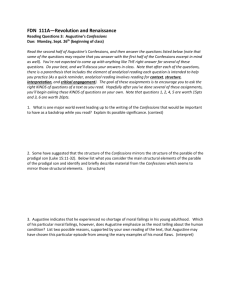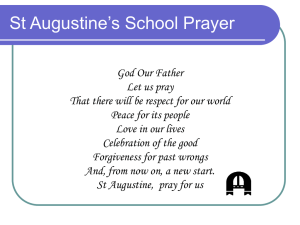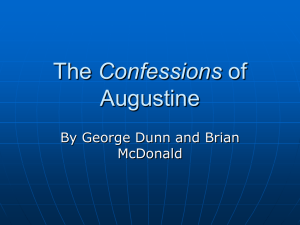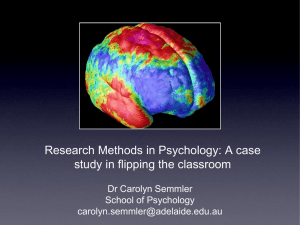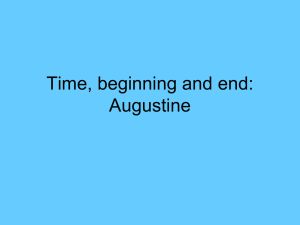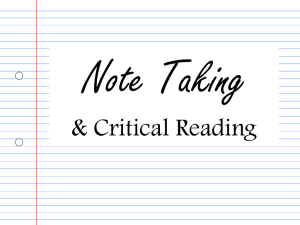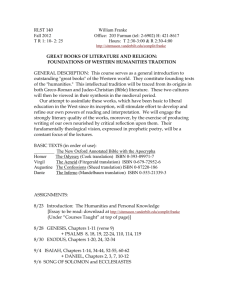Church History I Syllabus: 100-1300 | Coleman M. Ford
advertisement
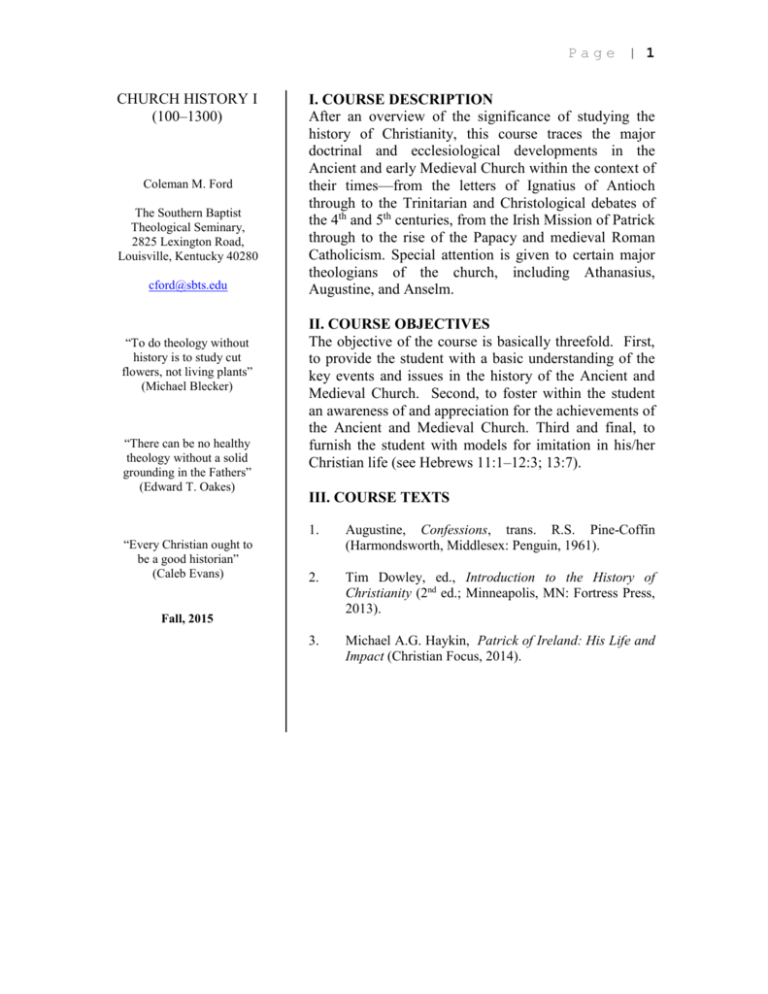
Page | 1 CHURCH HISTORY I (100–1300) Coleman M. Ford The Southern Baptist Theological Seminary, 2825 Lexington Road, Louisville, Kentucky 40280 cford@sbts.edu “To do theology without history is to study cut flowers, not living plants” (Michael Blecker) “There can be no healthy theology without a solid grounding in the Fathers” (Edward T. Oakes) “Every Christian ought to be a good historian” (Caleb Evans) I. COURSE DESCRIPTION After an overview of the significance of studying the history of Christianity, this course traces the major doctrinal and ecclesiological developments in the Ancient and early Medieval Church within the context of their times—from the letters of Ignatius of Antioch through to the Trinitarian and Christological debates of the 4th and 5th centuries, from the Irish Mission of Patrick through to the rise of the Papacy and medieval Roman Catholicism. Special attention is given to certain major theologians of the church, including Athanasius, Augustine, and Anselm. II. COURSE OBJECTIVES The objective of the course is basically threefold. First, to provide the student with a basic understanding of the key events and issues in the history of the Ancient and Medieval Church. Second, to foster within the student an awareness of and appreciation for the achievements of the Ancient and Medieval Church. Third and final, to furnish the student with models for imitation in his/her Christian life (see Hebrews 11:1–12:3; 13:7). III. COURSE TEXTS 1. Augustine, Confessions, trans. R.S. Pine-Coffin (Harmondsworth, Middlesex: Penguin, 1961). 2. Tim Dowley, ed., Introduction to the History of Christianity (2nd ed.; Minneapolis, MN: Fortress Press, 2013). 3. Michael A.G. Haykin, Patrick of Ireland: His Life and Impact (Christian Focus, 2014). Fall, 2015 Page | 2 IV. COURSE REQUIREMENTS 1. The course will meet in September, 2015. There will be required reading for each of the days that the course meets. The respective reading for each of the lectures will be detailed after each of the lecture titles. Summaries of this required reading will account for 60% of the final mark. These summaries are to be e-mailed to the professor by November 15, 2015. 2. For those completing the diploma, there will also be two papers, which constitute the remaining 40% of the final mark. The first of these papers is to be on the spirituality of Augustine’s Confessions and the second paper is to be a book review of Haykin, Patrick of Ireland: His Life and Impact. They are to be e-mailed to the professor by December 7, 2015. The body of each of these papers, excluding footnotes, is to be roughly 2,000 words and type-written. Their format is to follow Kate L. Turabian, A Manual for Writers of Term Papers, Theses, and Dissertations (8th ed.; Chicago: University of Chicago Press, 2012). Each paper should include a title-page (with the title of the paper, name of the course and the student’s name), full documentation (in footnote form), and bibliography—the latter two items following the format laid out by Turabian. Marks will be deducted for numerous grammar and spelling errors. Papers submitted late without advance permission will receive at best a grade of C. Extensions will be granted in the case of such things as family or personal illness. 3. For those completing the certificate, choose two figures discussed in the lectures and provide a short biography on each. In no more than 750 words, briefly discuss their background, their major contribution to church history, and why it is important for Christians to know who they were. You may draw in material from the lectures and reading as it pertains to your chosen subjects. Page | 3 V. COURSE OUTLINE Lecture 1: Introduction to the course & The Significance of Church History Lectures 2–3: The Ancient Church & the Roman Empire Lecture 4: Gnosticism: An Introduction Lectures 5–6: Irenaeus of Lyons (c.130–c.202) Lecture 7: The Epistle to Diognetus Lecture 8: “The New Prophecy” Lecture 9: Tertullian (c.160–c.225), Apologist for “The New Prophecy” Lecture 10: Cyprian of Carthage (c. 200–258) Lecture 11: The Canon of the New Testament Lecture 12: The Constantinian Turning-Point Lecture 13: Early Monasticism . Lecture 14: Athanasius (c.295–373), the Challenge of Arianism, and the Council of Nicaea (325) Lecture 15: Basil of Caesarea (c. 330–379) and the Council of Constantinople (381) Lectures 16–17: Augustine of Hippo (354–430) and his Confessions Lecture 18: Augustine and the Fall of the Western Roman Empire Lecture 19: Leo I (d. 461) and the Emergence of the Papacy Lecture 20–21: Patrick (c.389–461) and the Evangelization of Ireland Lecture 22: The Celtic Church and the Synod of Whitby (664) Lecture 23: The Rise of Islam and the Christian Response Lecture 24: The Carolingian & Anglo-Saxon Churches, & Anselm of Canterbury (c.1033–1109)
